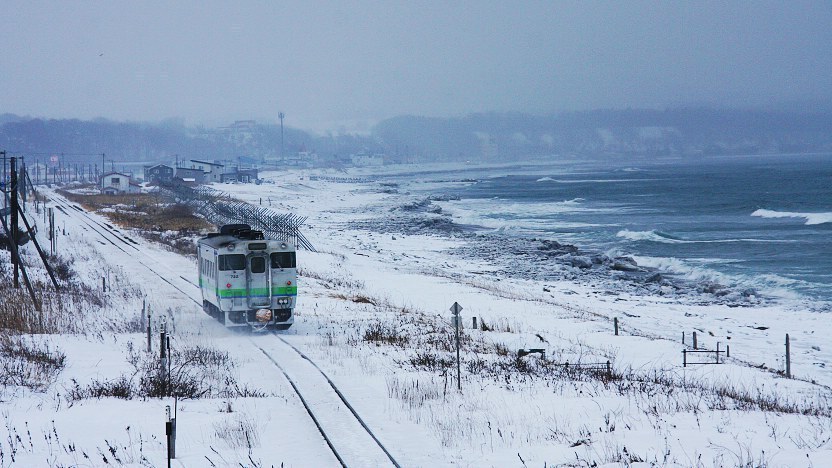Abashiri Drift Ice (Ryuhyo)

Located on a similar geographical latitude as Venice (Italy) and Portland (Oregon), the Sea of Okhotsk coast of Hokkaido is the northern hemisphere's southernmost region to see drifting sea ice. The sea ice typically reaches the coast around Abashiri in mid to late January and disappears again by late March to mid April. The best time to view it is usually around the second half of February.
While drift ice (流氷, Ryūhyō) can be observed along the entire Sea of Okhotsk coast from Wakkanai to the Shiretoko Peninsula, it gets thickest around Abashiri. Due to global warming, the amount and thickness of the drift ice has decreased considerably since the late 1980s.

One of the best and easiest ways to see the drift ice is from the Aurora Sightseeing Boats, which depart from Abashiri Port. Because drift ice is not always visible from the coast, the boats travel out into the Sea of Okhotsk to where ice is more likely to be found. The boat rides take about an hour and run several times a day during the ryuhyo season.
Under good conditions, the drift ice can also be observed from the coast. A popular way to do so is from the trains between Abashiri and Shiretoko-Shari Stations. Among regular trains, there is the Ryuhyo Monogatari, a special tourist train, which operates only during the drift ice season. The science behind the sea ice, a wide screen introductory movie and some of the small animals living below the ice, are introduced in the Okhotsk Ryuhyo Museum on Mount Tento in Abashiri.

Getting there and around
Buses connect Abashiri Station with the boat terminal (10 minutes, 200 yen), stopping at the Abashiri Bus Terminal along the way. Get off at Ryuhyo-saihyosen-noriba (流氷砕氷船のりば).
How to get to and around Abashiri

Hours and Fees
Aurora Sightseeing Boat Cruises
Hours
Admission
February: 5000 yen
March: 4500 yen
Okhotsk Ryuhyo Museum
Hours
8:30 to 18:00 (May to October)
10:00 to 15:00 (December 29 to January 5)
Admission ends 30 minutes before closing
Closed
Admission
Questions? Ask in our forum.


